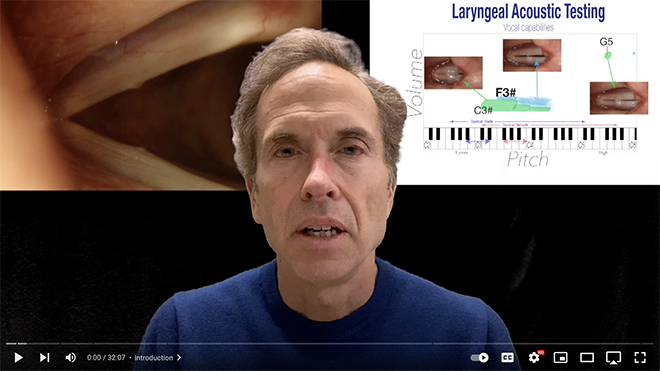In lieu of travelling these next few months, I have placed online one of my favorite lectures about identifying a voice disorder by sound.
- Phonogram.
You could reasonably ask,
Why should the examiner listen to the voice?
Seeing sound.
I am a visual person you say. I went into a surgical speciality for my talent to see something and remove it, yet, my ear isn’t well trained. I can’t carry a tune, but I specialize in laryngology and my patient is hoarse, a complaint about sound. Sound is created by the movement of air and I can’t see air, how do I visualize sound? This video gives you some ideas.
The larynx looks normal.
Patients often seem more accurate about their perception that something is not clear in their voice than physicians are at recognizing what is impaired. While the task of identifying the impairment is more difficult than just hearing it, diagnosticians all too often hide (perhaps unconsciously) their knowledge deficit. A “normal” appearing larynx ends up being “treated” by prescribing a pill or speech therapy rather than admiting the need for a more directed examination.
Audio Patterns.
Training your ear a little bit, we can begin to recognize regular and irregular air flow. Listening to a range of pitch and volume patterns of hoarseness appear. We can convert these findings into a phonogram, a graphic profile representing a vocal signature.
Seeing a vocal signature improves understanding of vibration disorders and laryngeal compensation, leading an ear-trained diagnostician to an accurate perception of the vocal cord vibratory impairment before looking with an endoscope and stroboscope.
Ultimately, this phonogram identifying hoarseness translates visually into pathology using endoscopy and stroboscopy. Gradually it can become possible, even easy, to identify voice disorders by ear alone.

